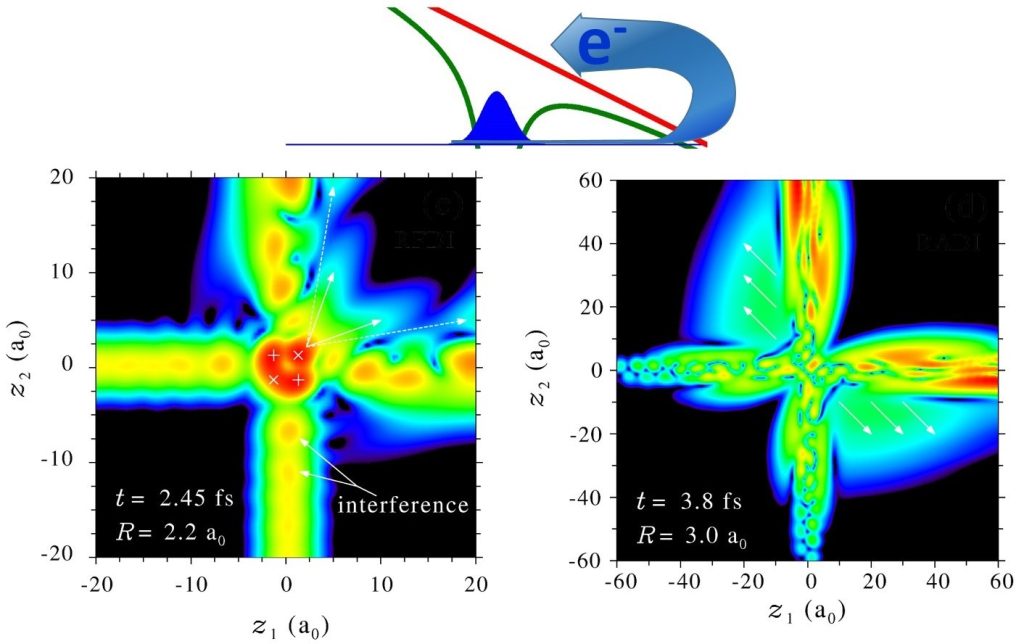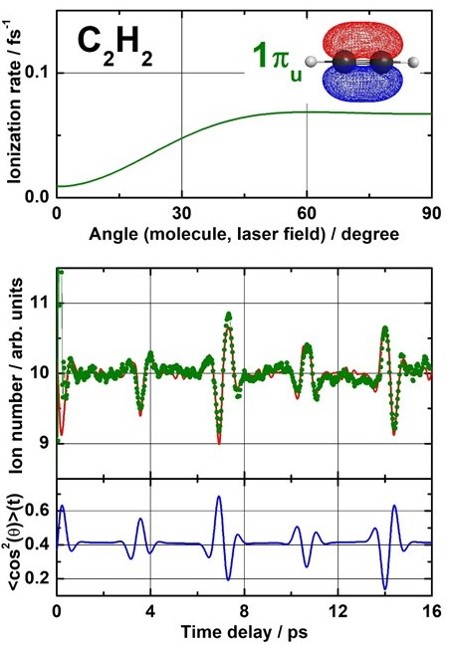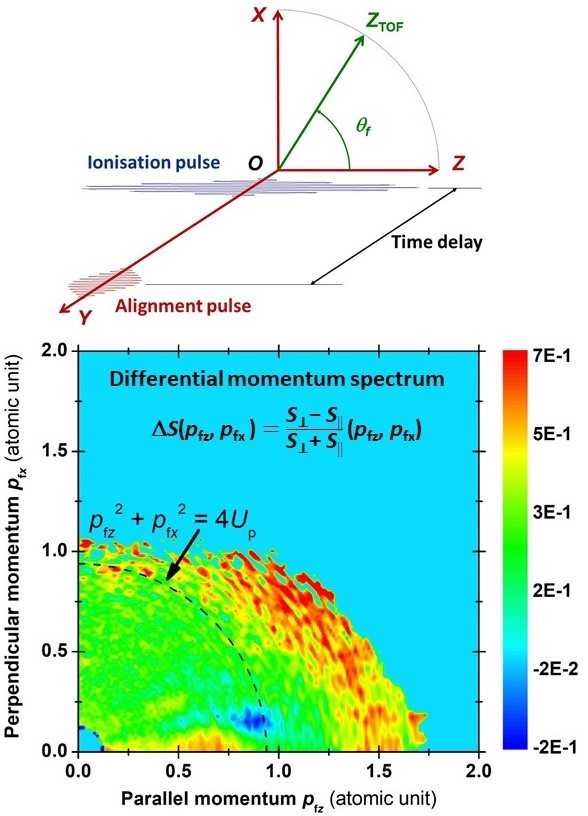During tunnel ionization of a molecule by an intense, linearly polarized laser field, the photoelectron oscillating in the field can be emitted directly or recollide on the ionic core.
The much lower probability recollision gives rise to the generation of harmonics by recombination, and to elastic and inelastic scattering of the photoelectron.
One of our aims is to study elastic scattering, also known as electron diffraction, in order to measure electron-ion collision cross sections in molecules, for which there is very little data in the literature.
Recollision depends critically on the ionized orbital, its spatial position and the laser illumination.
It is therefore important to characterize the entire ionization dynamic using angle-resolved photoelectron spectroscopy.
During tunnel ionization of a molecule by an intense, linearly polarized laser field, the photoelectron oscillating in the field can be emitted directly, or recollide on the ionic core.
The much lower probability recollision gives rise to the generation of harmonics by recombination, and to elastic and inelastic scattering of the photoelectron.

One of our aims is to study elastic scattering, also known as electron diffraction, in order to measure electron-ion collision cross sections in molecules, for which there is very little data in the literature.
Recollision depends critically on the ionized orbital, its spatial position and the laser illumination. It is therefore important to characterize the entire ionization dynamic using angle-resolved photoelectron spectroscopy.
Observations
These observations are correlated with ionization rates as a function of the angle between the molecular axis and the laser field. The ionization rate of the 1pu orbital ofC2H2shown at the top of the left-hand figure is maximal at 90°. Although direct ionization is highly dependent on the ionized orbital, the angular distribution of the recolliding photoelectron is generally wider when the molecule is aligned perpendicular to the laser field, highlighting the anisotropic potential of the molecular core.
The figure opposite shows the alignment strategy for C2H2, where the ion signal from the middle panel is in phase opposition to the degree of alignment of the bottom panel at different rephases of the rotational wave packet.


The figure opposite shows the angle-resolved photoelectron detection at the top, and the differential moment spectrum of the spectra recorded in C2H2 in the perpendicular and parallel configurations at 0.8 µm and1014 Wcm-2 at the bottom.
This differential spectrum reflects the overall dynamics of C2H2 tunnel ionization.


